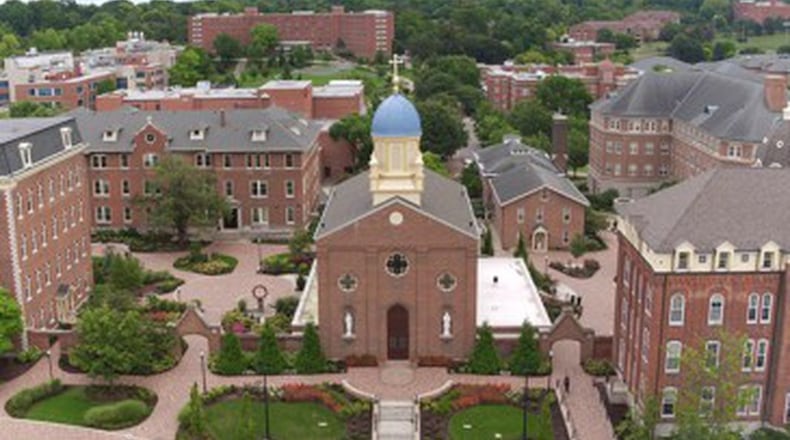The University of Dayton, Cedarville University and Antioch College increased their undergraduate and graduate enrollments this school year. However, overall enrollment at Sinclair Community College, Central State University and Wright State University is down from last year, officials said.
Nationally and statewide, enrollment at universities and colleges has dropped for the past decade.
This fall, 22 percent of U.S. higher education institutions saw a 2.5% decline in undergraduate enrollment compared to last year, according to the National Student Clearinghouse Research Center. Graduate student enrollment, however, is up nearly 4%, according to the report. Community colleges were hit the hardest, as they saw a 7.5% decline in enrollment.
“Adding to what we saw in the summer term enrollments, the fall data continue to show how much higher the stakes are for community college students during disruptions like the pandemic and the subsequent recession,” Doug Shapiro, Executive Director of the National Student Clearinghouse Research Center, said in a release. “The picture will become clearer as more data come in, but at this point the large equity gap for students who rely on community colleges for access to higher education is a matter of critical concern.”
UD has 8,652 undergraduate and 3,025 graduate students enrolled this school year, bringing the university’s total enrollment to 11,677 compared to 11, 474 last fall, the school reported. The undergraduate enrollment is a new record, officials said.
“The University of Dayton continues to see strong demand from the increasingly diverse populations we’re serving, including growth in the number of students earning bachelor’s degrees through the UD Sinclair Academy," said Jason Reinoehl, vice president for strategic enrollment management. "Our entire campus community has worked very hard to prepare for a safe educational environment and to support our students in their return to campus. Students and their families have responded positively. We’re excited to move to in-person delivery of courses today.”
Cedarville reported a record number of enrollment for the 14th consecutive year, the institution said. Undergraduate and graduate enrollments increased by 3.7% and 5%, respectively, over last fall, according to the university. This year, 4,028 undergraduate students are enrolled ― an increase of 145. The freshman class has 918 students, which is the second-largest in school history, according to a release.
There are 522 graduate students at the private Christian institution ― an increase of 25 from last fall ― who are enrolled in such programs as business, nursing, divinity and pharmacy.
Antioch, which started classes on Aug. 31, saw a 22% jump in overall enrollment, compared to 2019. The private, liberal arts college in Yellow Springs, has a total of 116 full-time students. Of that total, 50 are new students and the largest in “several years,” school officials said.
“Overall, our student body is still quite small, yet it is growing decidedly despite the pressures of COVID-19,” President Tom Manley said in a release. “While we suffer no illusions about the infectious nature of the virus, we are prepared to respond if and when the need arises. And this is one case where our smallness is a big advantage, as is our fall schedule with classes and exams concluding by Nov. 13.”
Sinclair Community College has 18,007 students this fall, a 4% decline from the same period last year, officials said. However, there are several critical business units in areas such as the prison education program that are still processing students so the school expects that number to change in the coming weeks.
While Wright state’s fall enrollment exceeded the leadership’s expectations, there was a decline from 2019. There are 9,587 undergraduate and 2,647 graduate students for a total of 12,234. In comparison, 13,742 total students were enrolled at the school last fall, officials said.
Although the institution’s enrollment so far is an improvement over the 10,700 students estimated to be enrolled for this year’s budget, it does represent an 11% decline from last fall, and shows that the university still has work to do to stop the recent trend of enrollment declines, spokesman Seth Bauguess said. Areas for improvement include growing the size of the incoming classes as well as the number of transfer students, he said.
“However, there is good news in that the university has improved its retention of the students it already had enrolled,” Bauguess said. “These factors have contributed to the result of a larger enrollment than budgeted, but a smaller enrollment this fall in comparison to last fall.”
Central State University expected the COVID-19 to impact fall enrollment, so officials budgeted for 1,500 students this fall. However, 1,880 students enrolled, said Zillah Fluker, vice-president of institutional advancement. Even so, that total is less than the 2019 enrollment, which was 2,005.
“We are an HBCU, and the COVID-19 has disproportionately impacted African Americans,” she said. "The majority of the student population we serve are African American, and from the inner-cities, so naturally, our number would tend to be lower than PWIs (Predominantly White Institutions).
The university does not have graduate students.
Wilberforce University is still tallying up its enrollment numbers, so the totals won’t be available until next week, officials said.
About the Author
